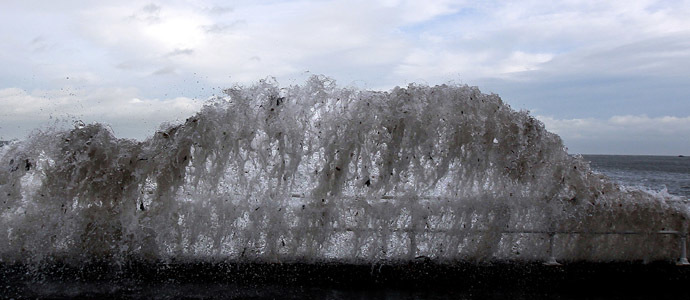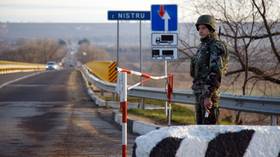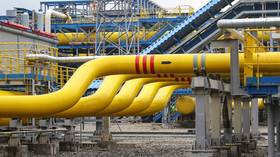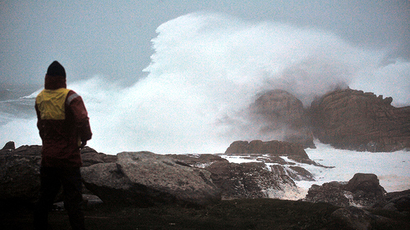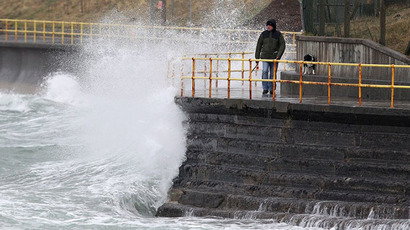UK swept by destructive, ‘17 year-high’ tidal surge (PHOTOS)
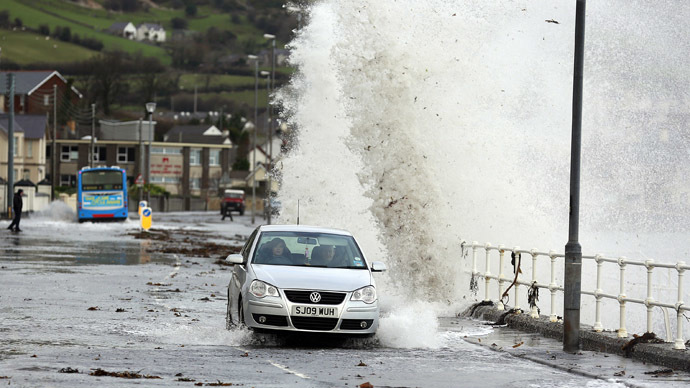
Coastal areas in the south and west of the UK have been swept with waves of up to 10 meters (30 feet) high, causing flooding and destruction. With around a hundred flood warnings active on Saturday, the country could yet expect more severe storms.
Gale force winds accompanied by monster waves, twice the height
of a double-decker bus, eroded Britain’s Atlantic coast on
Friday. Dozens of houses were flooded, piers damaged, roads and
railway tracks, including major ones, affected.
At Heathrow several flights had trouble landing because of the
wind, while connections to and from Gatwick were hampered by the
bad weather.
With more severe weather, it's important people in threatened areas keep up to date through local media, @metoffice and @EnvAgency.
— David Cameron (@David_Cameron) January 4, 2014
More than a hundred flood warnings were issued by Environment
Agency Saturday morning. Four of those were severe. That was
one-fifth Friday’s rate. However weather forecasts for the coming
days say it’s not yet time to relax.
"We certainly do have worse to come, we know that we've got
another band of weather coming in on Sunday which is going to
bring along what we call fluvial flooding, that's flooding to the
rivers," The Telegraph cited warning from Chris Bainger,
spokesperson for the Environment Agency.
The areas of particular risk pinpointed by the agency included
the Devon and Cornwall coastlines, Dorset, the Welsh coast and
the Scilly Isles.

Natural Resources Wales’ statement predicted the region was going
to be exposed to “the highest tide to hit the whole Welsh
coast since 1997.”
Some of the residents of Newport in south Wales were evacuated on
Friday. People in the “yellow-alert” areas across Britain have
been told to have their bags packed in case of an emergency.
The bad weather has also affected Northern Ireland, where in
Belfast police have been delivering sandbags and have issued a
warning to people in the Sydenham and Docks areas to prepare for
potential flooding and the possibility of evacuation, according
to The Belfast Telegraph.
The Prime Minister David Cameron tweeted his thanks to the emergency services and said that 200,000 properties have been protected by flood defenses over the last 36 hours.
Great work by emergency services & @EnvAgency helping people flooded. 200000 properties have been protected by flood defences in last 36hrs.
— David Cameron (@David_Cameron) January 4, 2014
The rough weather attracted a lot of sightseers to the piers and
harbors, despite police cautions for people to stay away from
seafront areas. Social networks of UK internet users have been
deluged with images of the enormous waves and their impact.
#Aberystwyth#storm We advise that you don't kick the bar today. pic.twitter.com/vrI8HGCZJM
— Mark Lewis (@MarkWaun) January 3, 2014
18-year-old Harry Martin went missing on cliffs near Plymouth,
Devon, after he told friends he was going to take photographs of
the Atlantic storm, the Daily Mail reported.
'There is colossal power in these waves that can knock people
off their feet. We would advise people to keep well away. There
have already been two fatalities this year already and urge you
not to add to those statistics,” the Environmental Agency’s
spokesman said.
Winds and waves have in some areas been accompanied by showers of
huge hailstones.
This is what's falling from the sky in #wilts (& I've got big hands) #stormpic.twitter.com/QLJveHK3qS
— James Aldridge (@jamesaldridge4) January 3, 2014
The weather-caused havoc prompted a meeting by the government’s
emergency Cobra committee on Friday. The issue of austerity cuts
appeared high on the agenda. The Environment Agency will be
forced to cut more than 1,600 posts, including an estimated 550
staff employed on flood protection, by October.
“To say glibly that everybody has got to make cuts is a
rather simplistic approach and I can’t imagine that people whose
homes have been flooded are going to be comforted by that kind of
statement,” The Independent reported Leslie Manasseh, deputy
general secretary of the Prospect union, as saying.
Last year saw a record number of flood alerts and warnings in
Britain. December was the stormiest month since 1969, according
to the Met Office.
